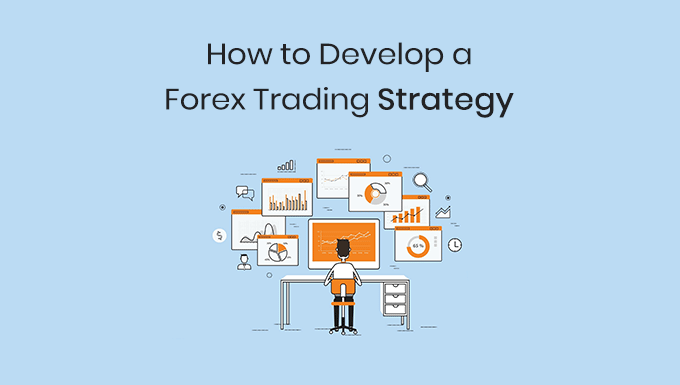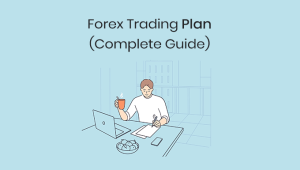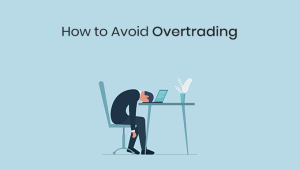Forex trading is a complex and risky activity that requires a solid trading strategy to be profitable. A trading strategy is a set of rules and guidelines that a trader uses to identify opportunities and make trading decisions. In this blog post, we will guide beginner traders on how to develop a forex trading strategy that suits their goals, risk tolerance, and trading style.
In this article, I will cover the key steps on how to develop a forex trading strategy, including defining goals and risk tolerance, conducting technical and fundamental analysis, developing a trading plan, testing and refining the strategy, and continuously learning and improving.
Table of Contents
• Choose Your Trading Style
• Conduct Technical Analysis
• Conduct Fundamental Analysis
• Develop Your Trading Plan
• Test and Refine Your Strategy
• Conclusion
• FAQs
1. Define Your Goals and Risk Tolerance
The first step in developing a forex trading strategy is to define your goals and risk tolerance. Setting trading goals helps you determine what you want to achieve from trading, such as earning a certain amount of profit or growing your account balance. Risk tolerance refers to how much risk you are willing to take on in your trades. To define your goals and risk tolerance, you can follow these steps:
Set Your Trading Goals: Define your short-term and long-term goals, such as daily or weekly profit targets, and consider your financial situation. Ask yourself what you want to achieve from Forex trading. Are you looking to make a quick profit, or are you planning to build long-term wealth? Your goals and objectives should be specific, measurable, achievable, relevant, and time-bound (SMART). For example, a SMART goal might be to increase your trading account balance by 20% within the next six months.
Define Your Risk Tolerance: Before you start trading, it’s crucial to understand your risk tolerance. This will help you determine the type of trading strategy that is best suited for you.
2. Choose Your Trading Style
Once you have defined your goals and risk tolerance, the next step is to choose a trading style that suits your personality, schedule, and trading goals. There are three main trading styles: day trading, swing trading, and position trading.
Day Trading: Day traders open and close trades within a single trading day. They typically use technical analysis to identify short-term price movements and execute trades quickly.
Swing Trading: Swing traders hold trades for several days to a few weeks to take advantage of medium-term price movements. They use a combination of technical and fundamental analysis to identify trading opportunities.
Position Trading: Position traders hold trades for several weeks to several months to take advantage of long-term price movements. They mainly use fundamental analysis to identify opportunities and consider macroeconomic factors.
3. Conduct Technical Analysis
Technical analysis is the study of price movements and market trends to identify trading opportunities. Traders use technical indicators and chart patterns to analyze price data and make trading decisions.
Choose Indicators: There are hundreds of technical indicators available, but it’s important to choose a few that suit your trading style and goals. Common technical indicators include moving averages, Bollinger Bands, Relative Strength Index (RSI), and Fibonacci retracements.
Chart Analysis: Traders use chart patterns to identify trends and potential reversal points. Common chart patterns include support and resistance levels, trend lines, and chart formations like triangles and head and shoulders.
4. Conduct Fundamental Analysis
Fundamental analysis is the study of economic and financial data to identify trading opportunities. Traders follow economic indicators and news events to understand the underlying factors that affect currency prices.
Follow Economic Indicators: Economic indicators are statistics that provide information on the performance of an economy. Traders follow indicators like Gross Domestic Product (GDP), inflation rates, and unemployment rates to gauge the health of an economy.
Monitor News Events: News events can have a significant impact on currency prices. Traders follow news sources to stay informed on global events like political developments, trade agreements, and central bank decisions.
5. Develop Your Trading Plan
A trading plan is a set of rules and guidelines that a trader uses to make trading decisions. A well-designed trading plan includes entry and exit points, risk management strategies, and evaluation criteria.
Set Entry and Exit Points: Traders use technical and fundamental analysis to identify entry and exit points for their trades. Entry points are the prices at which a trader enters a trade, while exit points are the prices at which they close the trade.
Develop a Risk Management Plan: Risk management is the process of identifying and mitigating potential risks in trading. Traders use strategies like stop-loss orders and position sizing to limit their losses and protect their capital.
Evaluate Your Plan: Traders should regularly evaluate their forex trading plan to identify areas for improvement. This includes analyzing their trading performance, reviewing their risk management strategies, and adjusting their plan as necessary.
6. Test and Refine Your Strategy
Testing and refining your forex trading strategy is an essential part of developing a successful forex trading strategy. Traders can use backtesting, demo trading, and live trading to test and refine their strategy.
Backtesting: Backtesting involves testing a trading strategy on historical data to evaluate its performance. Traders can use backtesting software to simulate trades and analyze the results.
Demo Trading: Demo trading involves trading with a virtual money on demo account to test a trading strategy in a real-time market environment. This allows traders to practice trading without risking real money.
Live Trading: Live trading involves trading with real money in a live market environment. Traders should start with small trades and gradually increase their position size as they become more confident in their strategy.
7. Conclusion
Developing a forex trading strategy requires a combination of technical and fundamental analysis, as well as a clear understanding of your goals and risk tolerance. By following the steps outlined in this guide, you can create a comprehensive trading plan that suits your trading style and goals.
Remember that developing a successful trading strategy takes time, effort, and discipline. It’s important to continuously monitor and evaluate your strategy and adjust it as necessary to ensure long-term profitability.
8. FAQs
Q: How long does it take to develop a Forex trading strategy?
A: Developing a Forex trading strategy can take anywhere from a few weeks to several months, depending on your level of experience and the complexity of your strategy.
Q: Do I need to be an expert in technical analysis to develop a Forex trading strategy?
A:No, you don’t need to be an expert in technical analysis to develop a Forex trading strategy. However, it can be helpful to have a basic understanding of technical analysis tools and indicators.
Q: Can I use the same Forex trading strategy for different currency pairs?
A:It is possible to use the same Forex trading strategy for different currency pairs, but it’s important to consider the unique characteristics of each currency pair and adjust your strategy accordingly.
Q: How often should I review my Forex trading strategy?
A:You should review your Forex trading strategy regularly, ideally after each trading session. This can help you identify areas where you need to improve and make adjustments to your trading plan.
Q: What is the best way to backtest a Forex trading strategy?
A:The best way to backtest a Forex trading strategy is to use a trading simulator that allows you to apply your strategy to historical market data. This can help you evaluate your strategy’s performance and identify any weaknesses or areas for improvement.






